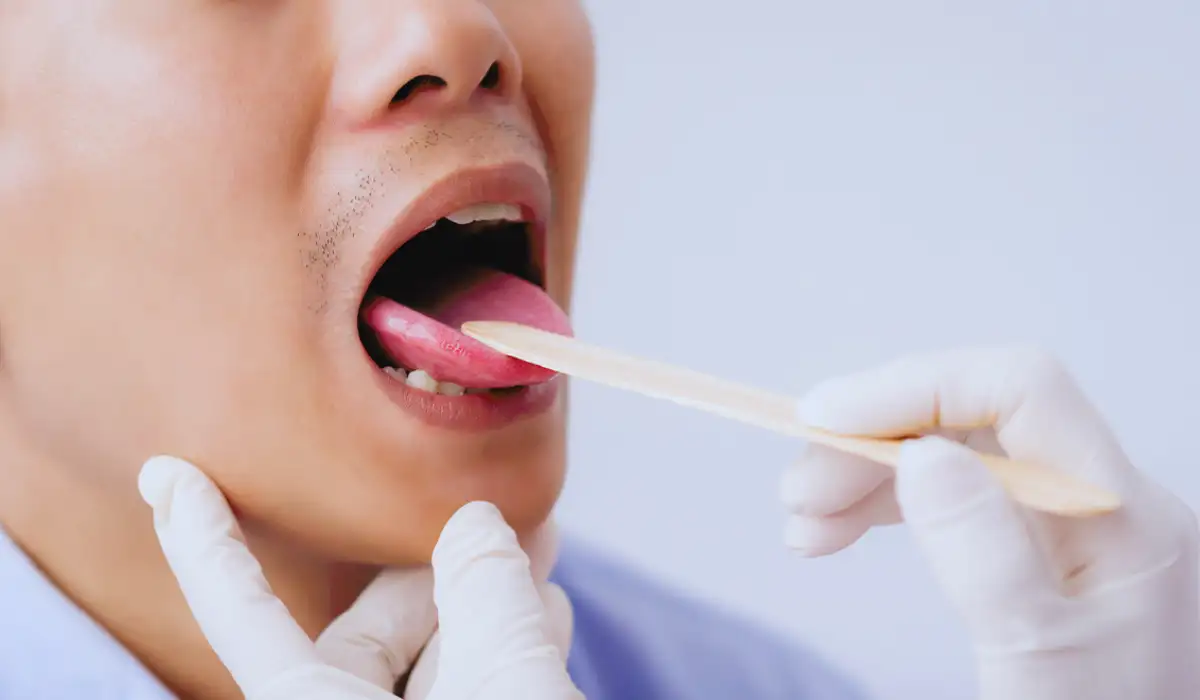Have you noticed swollen bumps on the back of your tongue? It may develop due to multiple reasons ranging from oral infection to more serious health issues such as cancer.
Thus, the right approach would be to consult a dentist so that they can diagnose the real cause and guide you through the best treatment.
In this article, we take you through the various scenarios of swollen bumps on the back of your tongue, their causes, diagnosis, and prevention.
Major causes of swollen bumps on the back of the tongue

1. Canker sores
In most cases, canker sores appear similar to round or oval ulcers. They will have a white or yellow center and a red border.
Apart from the tongue, canker sores also develop on the lining of the cheeks, lips, or at the gumline.
Causes
The main causes of canker sores include viral infection, hormonal fluctuations, stress, food allergies, mouth injury, and vitamin or mineral deficiencies.
Diagnosis
No tests are required to diagnose canker sores. Just with a visual exam, your dentist can identify them.
Prevention
According to the American Dental Association (ADA), cancer sores generally heal on their own in a time frame of one to two weeks.
Some of the over-the-counter medicines such as topical anesthetics and antimicrobial mouth rinses are quite effective for providing relief from a canker sore.
Apart from the above medications, try out natural remedies such as:
- Avoid foods that are hot in temperature, citrus, spicy or acidic. It is recommended to have more bland foods such as spinach, salmon, yogurt, or kale.
- Rinse with salt water
- Apply aloe vera gel or drink aloe vera juice
- Take zinc supplements
- Apply apple cider vinegar
2. Oral thrush
If it’s a case of oral thrush, there will be white patches on the tongue and other parts of the mouth. You may also experience slight bleeding and difficulty swallowing.
Causes
Oral thrush happens due to an overgrowth of the Candida fungus in the mouth and throat.
Diagnosis
If oral thrush is limited to your mouth, your doctor may examine your mouth to check the lesions and take a small scraping of them for further examination under a microscope.
If required your doctor may also recommend undergoing a physical exam and some blood tests to check the possibility of any underlying medical condition.
Prevention
- Use a soft toothbrush
- Clean the spaces between your teeth by carefully removing plaque and food particles. Make sure that it does not cause injury to the mucus membranes
- Rinse your mouth with an antiseptic mouthwash
- If you are using dentures (false teeth), clean them regularly with a toothbrush and a special cleaning solution
- Cut down the intake of sugar and yeast-containing foods such as beer, bread, wine, and refined white sugar
- Chew mint leaves. The anti-inflammatory and anti-bacterial properties in mint leaves act as a pain reliever and also protect the bumps against infections.
3. Leukoplakia
Leukoplakia is a condition in which white patches may appear on the back of your tongue, gums, or cheeks.
It is to be noted that these patches are generally noncancerous, painless, and heal on their own.
Causes
Doctors are yet to ascertain what causes leukoplakia. However, chronic irritation from tobacco, be it smoked, chewed, or dipped is believed to be one of the major factors that lead to its development.
Diagnosis
One of the main tests in the diagnosis of leukoplakia is a biopsy from the site of the lesion. However, this procedure needs to be conducted by a qualified healthcare provider.
It is to be noted that the biopsy would be invasive and painful. The procedure is also expensive and consumes a lot of time.
If it’s a small lesion, an excisional biopsy would be recommended. When it comes to large lesions, incisional biopsy, including the adjacent healthy tissue is removed. This is done for histopathological examination.
Prevention
- Make sure that you keep your teeth and mouth healthy. The best way to do this is by taking care of your teeth and gums.
- If you are wearing dentures, make sure that they fit properly.
- Undergo regular dental check-ups.
- Eat a balanced diet that consists of lots of fresh fruits and vegetables.
Apart from the tips mentioned above, say no to smoking, chewing tobacco, betel nuts, or paan. Last, but not least, while drinking alcohol, never cross the recommended limits.
4. Cancer and Bumps on the Tongue
The next possibility is squamous cell papillomas, also known as warts that appear on the tongue and the lining of the mouth. For your information, these are noncancerous bumps.
Causes
Apart from the tongue and the lining of the mouth, these warts can also appear in other parts of the human body. The cause of these warts is the human papillomavirus (HPV).
Diagnosis
Though the possibility is rare, there are chances that warts may develop into cancer. To monitor the warts, dentists take measurements or oral photos and make a note of their size and location.
In cases where the warts become large or critical, they can be removed through surgery.
Though not common, bumps appearing on the back of your tongue may be an indication of oral cancer.
The color of these bumps may be white or red. The other symptoms include pain or bleeding while eating or swallowing.
As part of the diagnosis, bumps may be sent for biopsy and may be further referred to an oncologist if necessary.
Conclusion
Hope the article clears the air on swollen bumps on the back of the tongue, its causes, diagnosis, and prevention.
Always keep in mind that your mouth is a window into the health of your body. There may be various signs such as bumps appearing on the back of your tongue that may be a symptom of other health conditions.
In case you come across bumps that are too large, spread to the rest of the mouth, and last for several weeks, reach out to your dentist for an evaluation.
References
- Fever blisters and canker sores. (2021).
https://www.nidcr.nih.gov/health-info/fever-blisters-canker-sores - Titsinides S, et al. (2018). Mucocele of the dorsal surface of the tongue: A case report.
https://www.ncbi.nlm.nih.gov/pmc/articles/PMC5971079/

